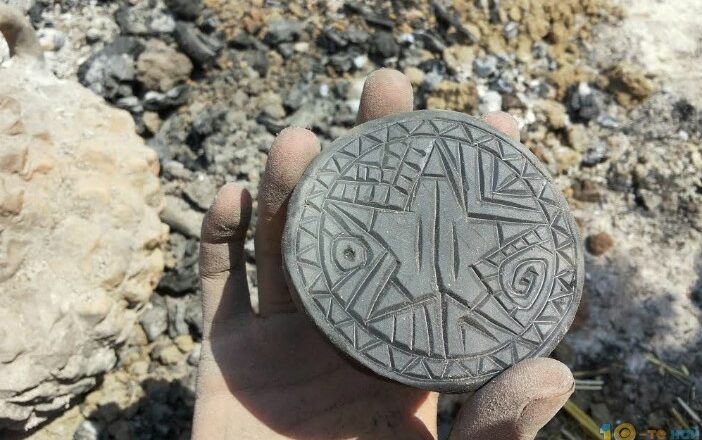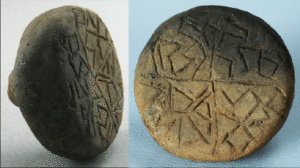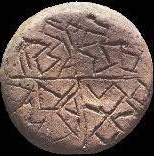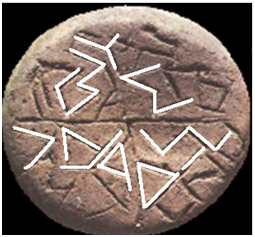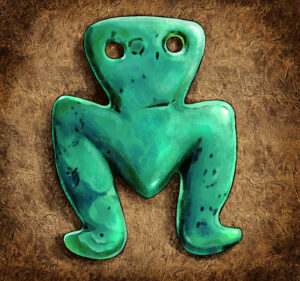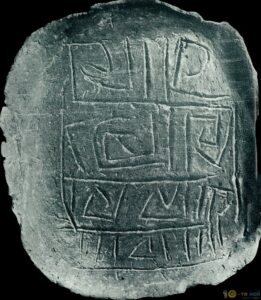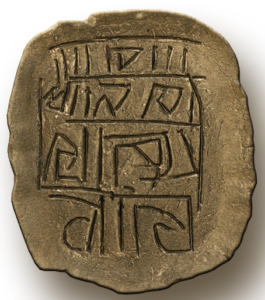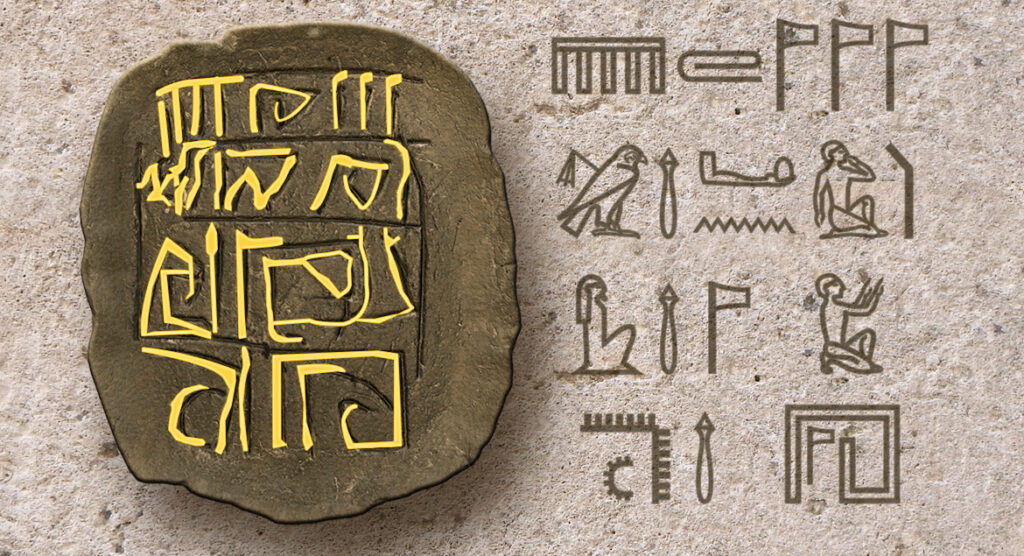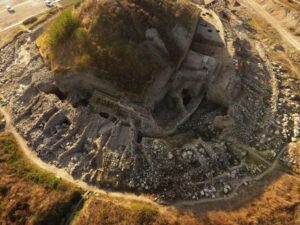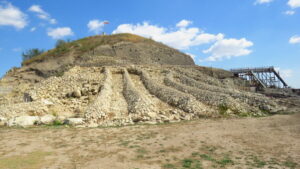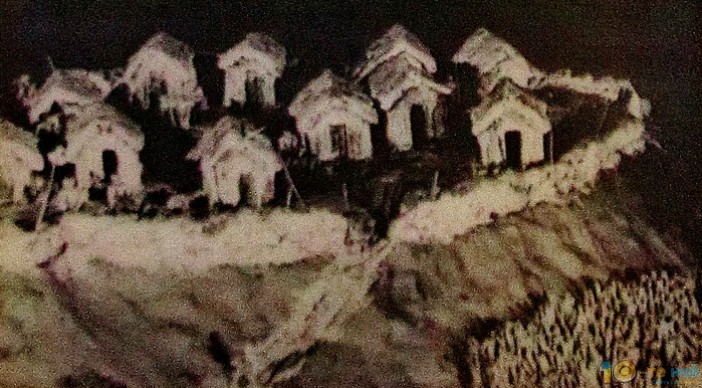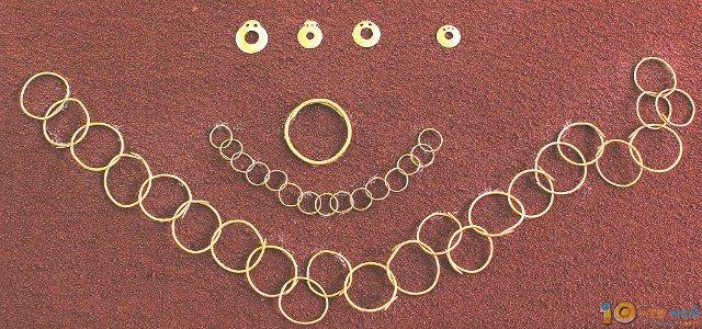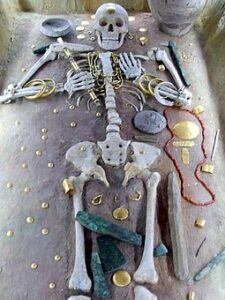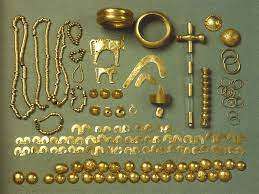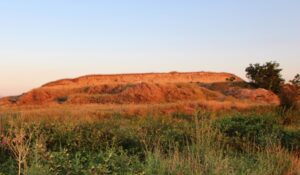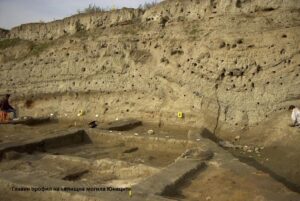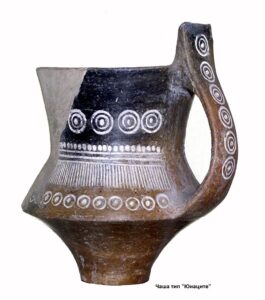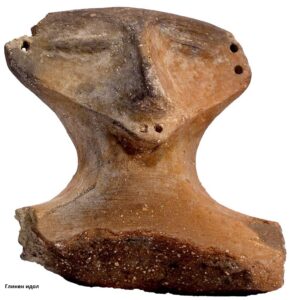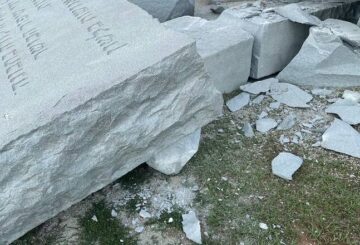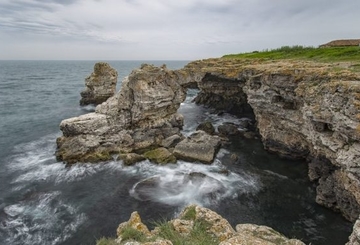This article is a translation (with some additions) from Bulgarian to English of the following source – the translation is done in order to make accessible these interesting and remarkable discoveries accessible to a broader audience. For most of the sites we give the location of the site or the museum where the artefacts can be seen.
It is widely known that Bulgaria is the third country in Europe (after Italy and Greece) in terms of the wealth of its cultural and historical heritage. The immovable heritage is well promoted – historical districts in the settlements, fortresses, temples, tombs, etc., but most of the archaeological sites are not accessible to the average Bulgarian. And those sites which are in the process of exploration – even less.
Most sites are not particularly attractive – the visitor sees drilling traps (excavations in depth, tracing the stratigraphic picture of the site), here and there the remains of structures appearing on the surface, unclear spots and coloring in the layers that he/she does not understand… Or in other words, the common man does not know what he/she sees, no matter how hard he tries to look.
Of course, the sites intended for visitors are socialized – preserved, restored, with convenient infrastructure and of course the most impressive objects are put on display. But important artifacts are concentrated in museums, far from their natural environment, and often the observer cannot appreciate their significance for science, only their interesting or unusual appearance.
Today I want to introduce you to 10 Bulgarian prehistoric archeological sites that you are unlikely to visit, but where surprising discoveries have been made that are important for world science. Sites that can rewrite history.
Site 1: A settlement mound near the village of Karanovo (location)
The Seal from Karanovo, Bulgaria
A place of continuous human settlement from 8200 to 5600 years ago. In its seven clearly distinguishable cultural layers, numerous finds have been discovered testifying to the lifestyle and culture of ancient people from the early Neolithic to the early Bronze Age, but one of the artifacts is particularly important – the so-called seal from Karanovo. The seal is one of the most ancient objects on which there are written characters. It dates back to the Late Stone-Copper Age. It was discovered in the 1950s by the archaeologist Vasil Mikov. The clay artifact is 4 cm high and 6 cm in diameter, equipped with a conical handle. On its round surface there are incised lines forming signs – pictograms located in 4 „quadrants“. Pictograms are a stylized-simplified form of more complex images.
Many attempts have been made to decipher this primitive script. American scholar Richard Flavin believes that the symbols on the Karanovo seal are zodiacal images – the earliest attempt to map the celestial constellations. For a long time, the prevailing opinion in science was that the population of the Balkan Peninsula during the Stone-Copper Age was primitive, but this is clearly not the case. The comparative analysis of the graphic signs from Karanovo with written signs from Sumer, Egypt and India shows that for 9 signs depicted on the Bulgarian seal there is a coincidence with 5 signs from the other three cultures. Only that both the Sumerian and Egyptian writing systems are much later – they date to the period 3400-3200 BC. Also, in the Bulgarian museums are preserved, stored, kept other fragments of local artefacts with written signs, even from the time of Neolithic age. Perhaps the birthplace of the world’s first writing and script is here in the Balkans?
Site 2: „Valoga“ near the village of Ohoden (Vratsa Region) (location)
8000 year old nephritis figure of the Mother Goddess in childbirth posture from the village of Ohoden, Bulgaria. The amulet depicts, in a stylized form, a childbirth goddess and was worn by young women in conjunction with certain rites to ensure fertility
A settlement from the early Neolithic age, whose exploration has started by the archaeologist Georgi Ganetsovski in 2002 and continues to this day. At this site were discovered and conserved two completely preserved skeletons (female and male), aged 8000 years, a temple of the sun and an altar with deer horns which has the only one analogue in a site near the city of Toulouse (France).
One of the most valuable artefacts from „Valoga“ is a nephritis image of the Mother Goddess giving birth. Semi-precious nephritis was a sacred stone for many ancient cultures. It was especially honored in the country of China, from the territory of which the earliest artefacts were found so far – from 7000 years ago. But the oldest nephritis artifacts found on the Bulgarian lands are 8000 years old. Associate Professor Ruslan Kostov from the Institute of Mining and Geology at the Bulgarian Academy of Sciences proved that there are three known deposits of nephritis in the southern part of Bulgaria. Similar artefacts of amulets have been found at other Bulgarian sites – the early Neolithic settlements near the village of Ovcharovo (Targovishte region), the village of Kovachevo (Blagoevgrad region), a Neolithic settlement near the village of Yabalkovo (Haskovo region), the Azmash settlement mound (Stara Zagora region), etc.
Nephritis amulets were a great achievement of the Neolithic art. Not only the way of stylizing the images, but also the stone processing technique are very specific. The results of their studies provide many answers, but they also raise more questions. It is logical that the polishing of the product in that distant era was done by hand, and the microscratches should be located in different directions. But when examining the artifacts under a microscope, scratching is clearly found in only one direction, which can be obtained when using a mechanical device with an abrasive wheel. However, according to science, this technique was discovered by man 3000 years later. Perhaps the Balkan human community was more advanced than human groups in other parts of the world?
Site 3: The prehistoric city in Durankulak Lake (location)
It is located on the so called “Big Island” and is a settlement that arose at the dawn of human civilization. The British newspaper „Daily Mail“ calls it the „Dobruja Troy“. And archaeologist Petar Zidarov says on the BNT television camera:
„The people who lived in this place were not only excellent builders, but also made jewelry from native gold and copper, and traded with distant lands.“
Excavations, which began in 1970 and continue to this day, reveal that the settlement was established by the first settled agricultural population of the Europe continent, during the late Neolithic (about 7500 years ago). The stone city, apparently built according to a pre-prepared plan, has remains of clearly visible: a cult complex with a beautifully painted two-storied temple, with the area of a tennis court and adjacent buildings; administrative complex with palace buildings; southern and southwestern rich neighborhoods and neighborhoods for the rest of the population. Its infrastructure is correct, there are piers and retaining walls. And all this in the era for which the average Bulgarian knows that primitive people lived in caves. The building achievements of the ancient people make the site remarkable.
Two other ancient civilizations, left in history with their monumental stone buildings, are the Egyptian and the Sumerian. They began their development at least 2000 years later. And it is a known fact that from the First to the Third Dynasty, the rulers of Egypt were not of African origin, but of the European race – with light skin and hair. Aren’t they descendants of the Durankulak ruler-engineers? Science has yet to decide on this hypothesis.
Site 4: Early Neolithic settlement near the village of Gradeshnitsa (Vratsa Region) (location)
The Plate from Gradeshnitsa – pictographic writing (older than the earliest Egyptian writing by about 2000 years)
It was discovered in 1961 and studied by the team of archaeologist Bogdan Nikolov. Three residential horizons (superstructure of a new settlement over the remains of the old one) were discovered on the site, located on 2800 sq. m. The findings consist of an extremely rich domestic and cult inventory of great scientific and cultural value, which leads scientists to make the assumption that there was a religious center here. Whole or broken vessels were found in all three layers of the settlement, on the bottoms of which pictographs were found. About 40 different symbols are registered. A large part of the signs are of a cult-magical nature.
In 1969, the so-called tile from Gradeshnica, dated to the 5th millennium BC, was also discovered. It is a clay vessel in the shape of a square flat plate, with 2 holes pierced, apparently to be hung. The subject in question is written on all sides with pictograms. Of course, many attempts have been made to decipher the message encoded on it. The first hypothesis is the one of its discoverers – Bogdan Nikolov, who believes that the Great Mother Goddess is depicted on the tile and the lunar cycle is represented. In the middle of the tile is a schematically depicted female figure, with raised hands, surrounded by various signs. A comparison between the Karanovo seal and the tile from the village of Gradeshnitsa was also made by Academician Vladimir Georgiev and Prof. Vasil Nikolov. And Doctor Stephan Hyde even claims in his works that he found matches with Egyptian hieroglyphs and that he read and translated the text of the inscription on the artefact.
The pictographic writing on the tile from the village of Gradeshnitsa is older than the earliest Egyptian writing by about 2000 years. This would mean that a much older civilization existed in the Balkans, several millennia before the first great civilizations in the world. It is also possible to hypothesize that this Balkan civilization may have had an influence on the Egyptian one, and the boldest claims are that it may have been the cause of its birth.
Site 5: Settlement mound „Solnitsa“ in the town of Provadia (Varna Region) (location)
The ancient salt-minig center in Provadia, Bulgaria. The first row: pictures of the mound. The second row: artistic view of the settlement
Its research began in 2005. The site turned out to be the oldest salt-mining center in Europe, which arose near the single and largest deposit of salt in the eastern part of the Balkan Peninsula. The inhabitants of the “ Solnitsa“ (eng: salt-mining place) extracted and boiled the water solution from the natural spring, in thin-walled vessels specially made for the purpose, heated in dome furnaces. In those times, salt molds played the role of universal currency. The production and trade of this extremely important commodity in antiquity led to the economic enrichment of the local population and the need, in the middle stage of the Neolithic Age, to proceed with the construction of monumental defensive structures to protect the inhabitants of the prehistoric city and their wealth.
During the excavations of the site, the ruins of the first stone fortress wall in Europe, dated to nearly 7000 years, were discovered, built with „cyclopean“ construction of huge stones of irregular shape. The wall forms a circle around the settlement, broken by the openings of two gates (northwestern and southeastern ones), measuring 2.40 m, connected to the main street passing through the whole settlement. The stone construction is massive, and the pathways to the gates are narrowed by huge bastions, over 3 m high and 4.50 m thick. The total built-up area is 7000 sq. m. The entire fortress is surrounded by a moat, 2.20 to 3.30 m deep and 3 m wide.
Prof. Vasil Nikolov says:
„Three successively existing stone fortresses were studied, in which the ancient people protected the extracted valuable raw material – salt, from invasions and robberies. It had the function of the first money. Therefore, the industrial center where our great grandfathers mined salt was actually the mint of Europe.“
Site 6: A large settlement mound near the town of Ruse
One of the most significant prehistoric settlements in Northeastern Bulgaria. The mound was noticed and explored at the dawn of Bulgarian archeology by the Shkorpil brothers. In 1904 Herman Shkorpil made the first drillings in the mould, 10 m high, 50 m wide and 98 long. The artifacts found at that time marked the beginning of the collection of the Ruse Museum of History. The study of the mound was long and careful – in 1912, Karel Shkorpil probed the southern and northern parts of the mound and brought out a huge number of artefacts. In 1921, the newly established Ruse Archaeological Society continued the research. A comprehensive survey of the site was carried out from 1948 to 1953. 20 building horizons were identified, with the first settlement being the beginning of the Stone-Copper Age, 7000 years ago, and the end of habitation – at the beginning of the Bronze Age.
Of interest is the largest discovered clay image of the Great Mother Goddess, dated to the period 4300-4200 BC. The relief depicts the pregnant goddess, with her hands raised in blessing. The figure is believed to represent the cult of fertility. One of the important findings, of which the Ruse Museum is rightfully proud, is the largest golden image of the Mother Goddess from the period of Stone Copper Age. Along with it, 3 more gold artifacts exhibited: a gold spiral, a bracelet and a round applique.
One of the most mysterious artifacts in the museum’s collection is an ancient agricultural calendar depicted on a clay tile. In the center of the pentagonal plate, a solar (solar) symbol is incised – a spiral rotating in a counter clockwise direction, and on both sides five X-shaped signs are carved vertically. In addition to incising the figures, there is also filling in the lines with red paint. The correct shape of the pentagon can also be perceived as a building with a gable roof – a temple of the solar deity, in the center of which is the image of the god, and the other signs symbolize the worshipers, with hands raised in praise. In the funds of the museum there are over 7000 artifacts found in the large settlement mound, each of which is a carrier of information about life in that distant time.
Site 7: Settlement mound of Hotnitsa (location)
Hotnitsa Gold Treasure
The location of the world’s oldest processed gold. Rescue excavations at the site near the village of Hotnitsa (Veliko Tarnovo region) began in 1956, after ancient artifacts came to the surface during agricultural work. The research was carried out by the team of the archaeologist Nikola Angelov. During the excavation of the settlement mound, about 20 homes of people from the time of the Late Stone-Copper Age – about 6000 years ago – were examined. In building No. 4, which archaeologists assume was the cult center of the settlement, a gold treasure of 44 items were discovered, with a total weight of 312 grams. The products are made of 22.15 karat native gold, with 8% silver impurity.
The treasure contains 4 round plates and 40 rings of various sizes. The excavations near the village of Hotnitsa were renewed in 2000 by the team of archaeologist Alexander Chokhadzhiev. Gradually, more gold objects emerged from the earth layers – 3 gold plates and 2 spirals. The golden spiral found in 2002 was discovered 1.5 m deeper than the layer of the first treasure of Hotnitsa. From this significantly older culture layer, the artefact is a 24 carat native gold, formed by the hammering method. Until now, the world’s oldest processed gold is believed to be from the Varna Chalcolithic Necropolis, but here’s what the head of the dig says:
„The building in which the Hotnitsa treasure was located is older than the graves in Varna, but who can say exactly how old the artefacts are? It is important that these two objects containing the oldest gold in the history of mankind come from the territory of Bulgaria.“
Site 8: Chalcolithic necropolis near the city of Varna (location)
The Varna Gold Treasure – the oldest processed gold in the world: (left) the grave of the king-priest with the gold artefacts, (right) gold artefacts found in the grave. The scepter in the right hand of the skeleton symbolizes the kings power and status – this scepter is the earliest sign of a royal power in the world. The people of this first European civilization had clear social structure and organization.
It was discovered in 1972 during excavations near Lake Varna. The ancient cemetery is divided into two sections, conditionally named Necropolis 1 (well-studied) and Necropolis 2 (unstudied, as its territory was already covered with modern buildings). The dating of the examined bone material shows that the burials are from 6600 years ago. The findings from the 308 graves examined are amazing, they include: gold objects and ornaments – 3078 pieces, with a total weight of 6.5 kg; copper knives and tools – over 160 pieces; flint knives – over 230 pieces; stone tools – over 90 pieces; clay vessels – over 650 pieces; horn and bone products – over 12 200 pieces; ornaments from the shell of the mollusk Spondylus gaederopus – about 1100 pieces; the most famous is the burial of the priest-king from grave No. 43, explored in 1974. The man buried in it was about 50 years old, buried with magnificent gifts, among which a ritual double-edged ax stands out – a staff, with a gilded handle, large gold bracelets, many other jewels of noble material and even a golden „condom“. The amount of gold found in this burial was 1516 kg. It is more than the it has been found in the whole world from the Stone-Copper Age. This categorically proves that the civilizational development of this region also includes a high level of knowledge in the field of metallurgy, mining and processing of gold.
Here is what the world-renowned scientists say about these discoveries: Prof. Maria Gimbutas (Harvard University – USA) defines the Varna Necropolis as „the oldest civilization in Europe“; Prof. Douglas Bailey (Great Britain) – „…much earlier than the emergence of the first cities in Mesopotamia and Egypt, a people who were ahead of their time in trade, art and technology lived on the Bulgarian lands.“; Prof. Michel Louis Seferiad (France) – „A civilization that precedes everything known so far in science“; And the French magazine „Archaeology“ published a special article “The birth of the kings. The first classical civilization in Europe”. It says:
„A civilization in today’s Bulgaria, with a complex social system, a civilization that masterfully processed gold, copper and clay and introduced a form of ancient writing…“
Site 9: Settlement mound near the village of Yunatsite (Pazardzhik Region) (location)
Settlement mound near the village of Yunatsite, Bulgaria. First row: the mound and its layers. Second row: some of the artifacts found in the mound – a ceramic cup and clay idol. An airieal video of the mound: link
It is located in the area „Ploska Mogila“ and has been known to science since 1939, when archaeologist Vasil Mikov began his research. The remains in it are from the end of the Stone-Copper and Bronze Ages and from the Thracian period. In 1976, the excavations were renewed, and from 2002 to the present day, research is carried out there by the team of the archaeologist Rumen Boyadzhiev. In 2006, the remains of residential structures were discovered that spread over almost 10 hectares, and it turns out that the cultural layering is much deeper than expected. Remains of a massive fortress wall from the Stone and Copper Age are also revealed. In 2009, archaeologists came across a massive defense system that has no analogues in Europe so far. At the time of its excavation, its height was nearly 3 m, but it is believed to have been almost 7 m. It was built of wood, clay and stone, and was smoothly plastered with yellow clay on the outside. The wall has been traced about 25 m from the southern side of the mound, with the rest of it yet to be excavated. For now, it is believed that this is the wall of a huge citadel, with an area of about 8000 sq. m., which was located inside the city. In front of this wall was a deep moat, and in front of it another defensive wall.
It was found that the settlement was built according to a plan, there is a clear division between the residential and the production part. The foundations of some of the buildings are 80-100 square meters, there are also data on multi-story construction. The plastered houses were decorated with white and red paint. Until now, archaeologists have not yet come across the palace and temple part of the settlement, but this is understandable – only 600 square meters have been studied. The information received so far gives the right to specialists to define the settlement mound near the village of Yunatsite as the largest prehistoric fortress in Europe during the Stone and Copper Age period. Scientists say that settlements of this type appeared in Europe about 2000 years later, during the Bronze Age.
However, what is unique about this site is not only the gigantic fortification and the size of the city, but the large amount (more than 120 pieces) of clay figurines of bird-people associated with a specific local cult.
Site 10: The largest deposit of processed gold near the village of Dabene (Sopot Region) (location)
Discovered during agricultural activities, explored in 2004 through rescue excavations and supplemented by confiscation of artifacts stolen from treasure hunters. In 3 years of research, archaeologists discovered over 20 000 gold items (mostly beads). And the employees from state security agency DANS saved another 15 000 gold elements, when they tried to be exported outside of Bulgaria. These large quantities of gold objects lead experts to believe that they have come across a regional production center where fine jewelries were made. The treasure from the village of Dabene originates from an ancient necropolis and ritual space, and perhaps also from the Dabene-Sarovka site of the Early Bronze Age.
Inexplicable to specialists is how such small and exquisite beads – from 1.5 to 3 mm in diameter – were produced. They have tiny holes, for stringing and precisely polished, and some of them are even shaped like flowers, through fine cuts. Among the findings there are also spirals and dividers that unite several rows of strings, giving symmetry to the necklace. Some gold elements are so small that archaeologists separated them by sifting the soil with flour sieves and picking them up with tweezers. The gold objects were made using the technology of powder metallurgy, also called sintering. Even today, this is impossible without special equipment, which makes the finds from 5000 years ago a real mystery.
According to the Assoc. Prof. Krasimir Leshtakov, the findings are similar to those from Troy, but there we are talking about several dozen pieces. It is possible that on the way of trade, works of jewelry art traveled to faraway places and that Dabene jewelry became an ornament of Priam’s wife. Prof. Valeria Fall says:
„Years ago, Turkish researchers claimed that the Bronze Age settlements on our lands were colonies of Troy. But what if it’s the other way around? Archaeological discoveries suggest an expected twist – it is quite possible that Troy was a province of the early Thracians. The vast settlement mounds, settlements and necropolises of the Bronze Age in Thrace have not yet revealed their secrets.„


